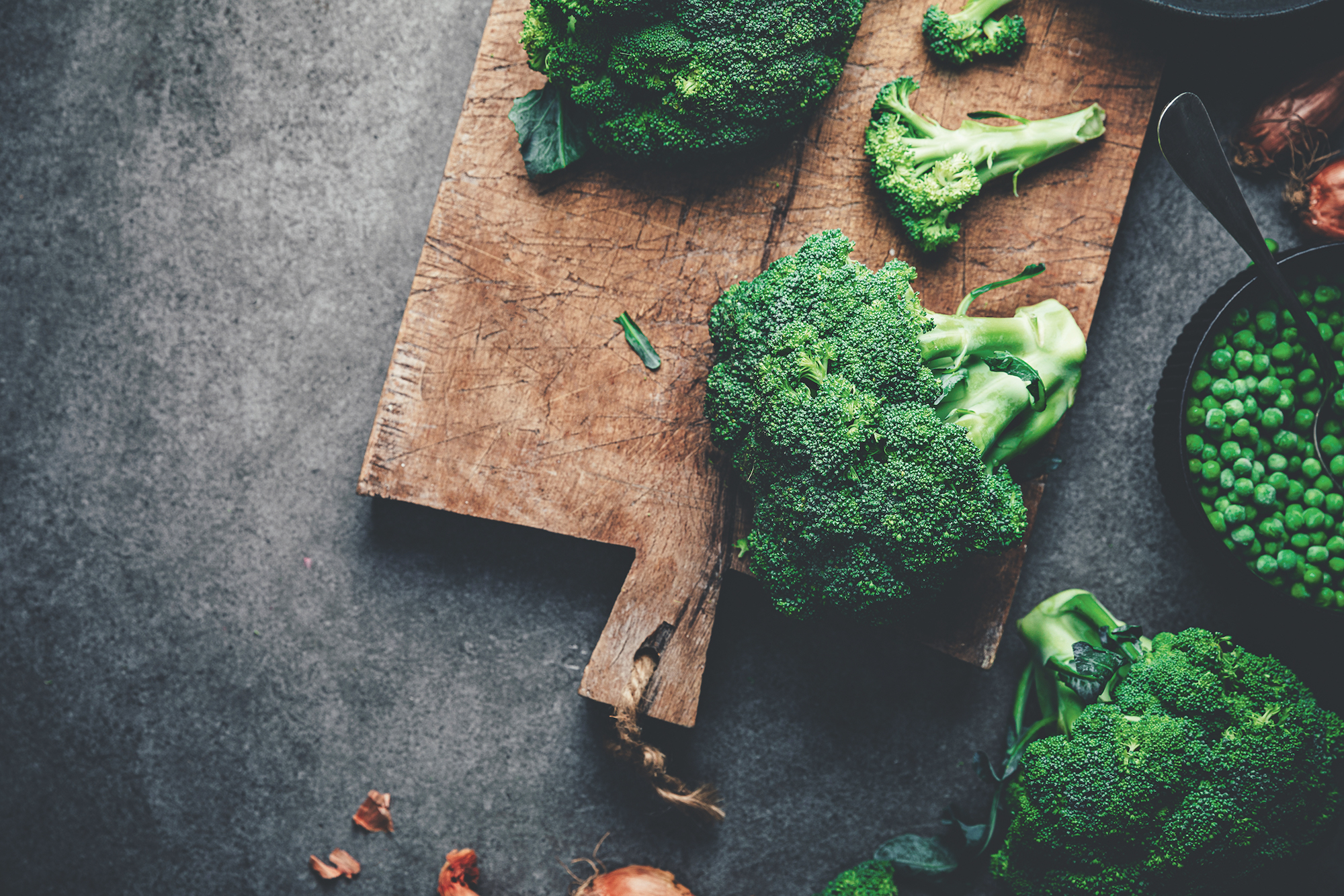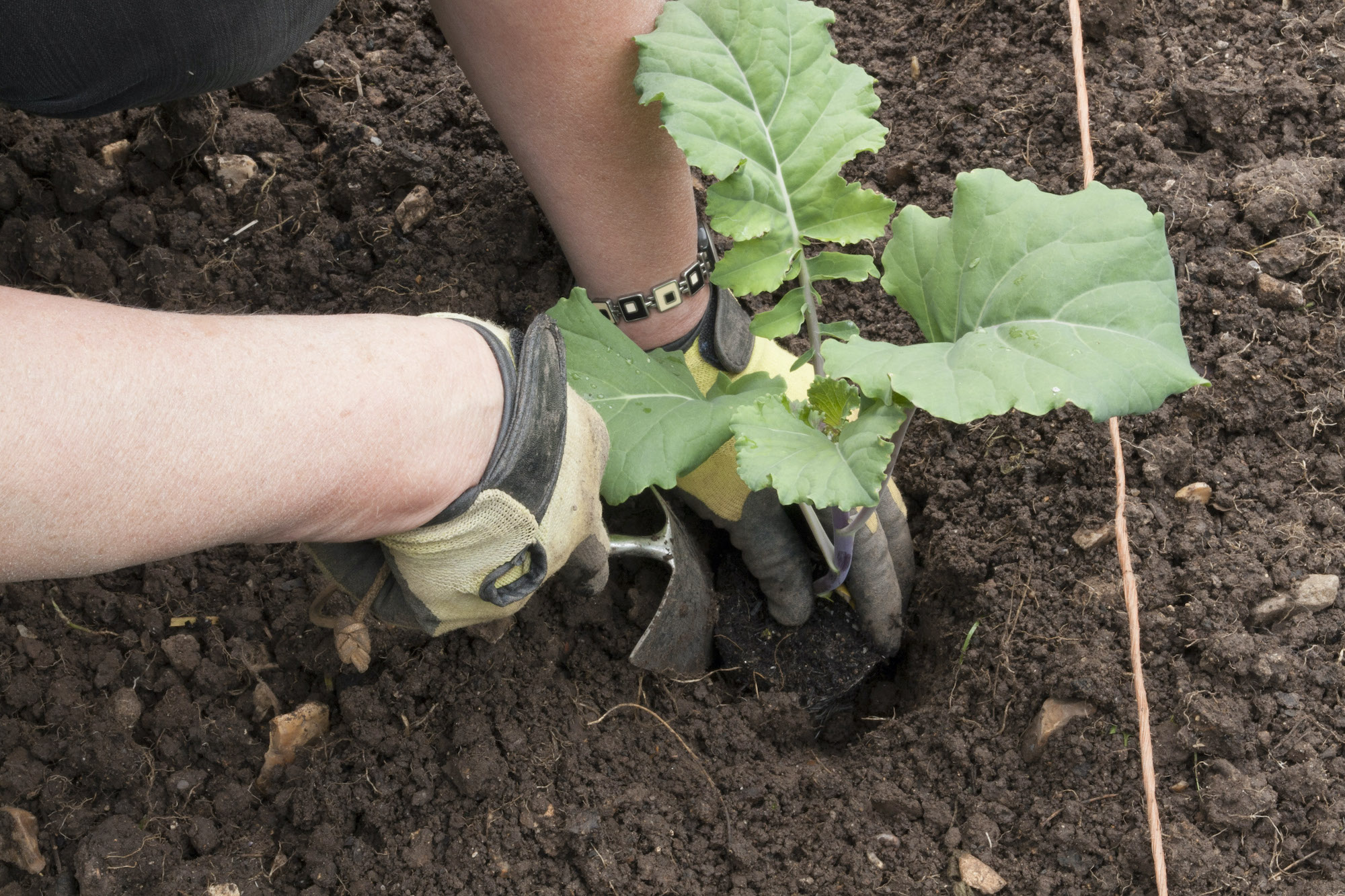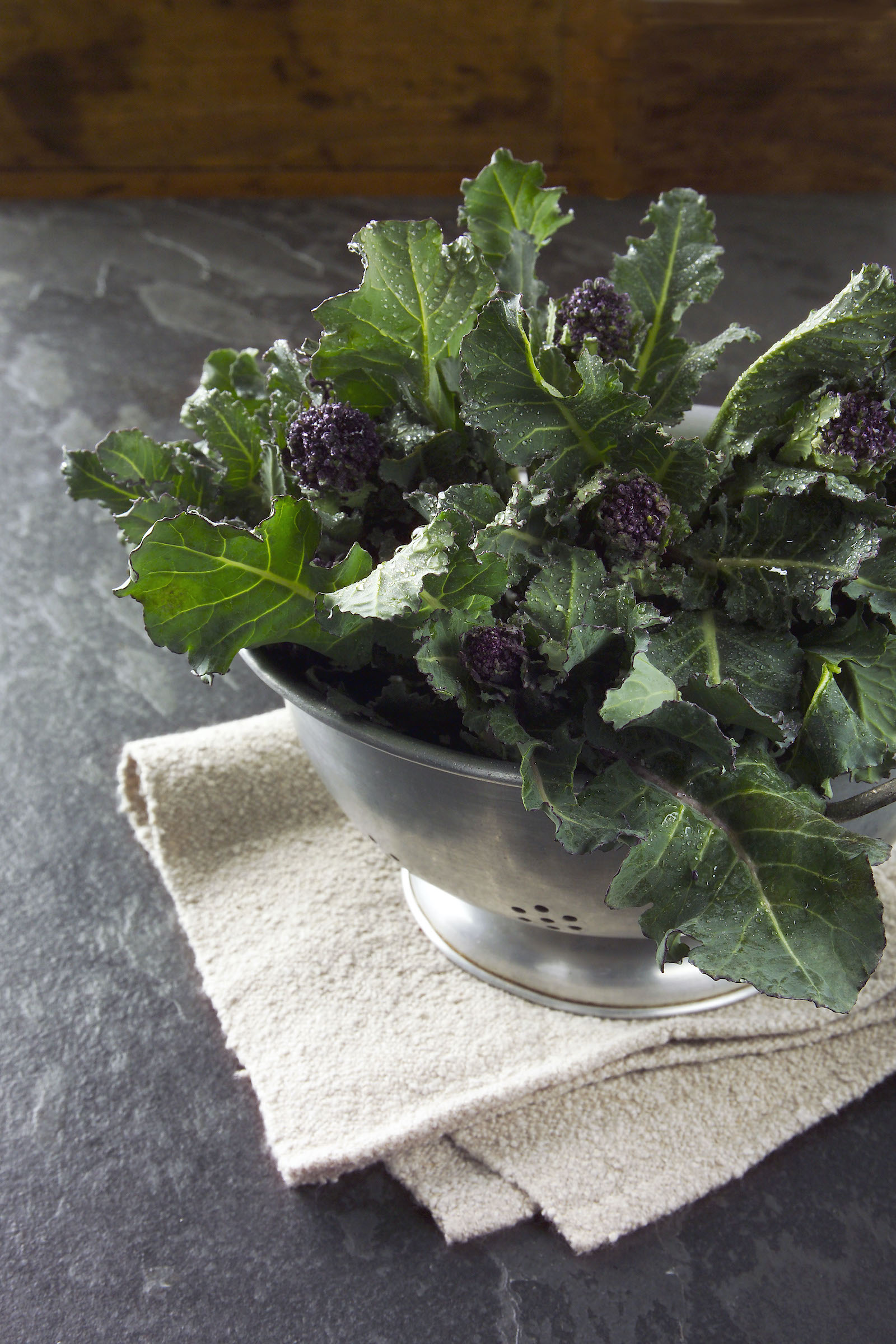How to grow broccoli – for tasty goodness
Grow broccoli – a real family favorite, in your veggie patch, for healthy greens from the garden


A member of the brassica family, the humble broccoli is a nutritional superfood, ranking alongside kale and cabbage for its anti-inflammatory and antioxidant properties, which studies show can protect against cancer and other diseases.
If you're worried about how to grow broccoli, don't be – it is one of the easiest crops. And depending on what type of broccoli you sow, you can look forward to a healthy harvest from spring to early winter, which makes it a must-have when you're looking at your seasonal planting and kitchen garden ideas.
This is a crop that needs to be planted in open ground; they have a long tap root, which means they don’t do well in anything but the largest pots.
How to grow broccoli: know the two types of broccoli

There are two types of broccoli to consider when planning your vegetable garden. The large green heads on a thick stalk we know as broccoli are properly called calabrese. The other type is known as true or sprouting broccoli – these are smaller florets that extend upwards on slender shoots. Purple sprouting broccoli is the most distinctive but you can also find green sprouting varieties.
Calabrese broccoli is milder in flavor and has a longer season than sprouting broccoli. They are easy to grow and, treated well, will reward you with multiple crops from the same plant from summer to fall.
‘Calabrese is exceptionally easy to grow in any fertile, well-drained garden soil in full sun,’ says garden expert Guy Barter, author of Growing Vegetables & Herbs (RHS).
True or sprouting broccoli has a deeper, almost nutty flavour. Unlike calabrese, you can eat the shoot (just trim off the ends and any yellowing leaves) as well as the heads of the plant. Sprouting broccoli can be sown from April to July for a crop early the following year; or plants the seeds in mid to late spring for an early winter crop.
Design expertise in your inbox – from inspiring decorating ideas and beautiful celebrity homes to practical gardening advice and shopping round-ups.
There’s a form of broccoli called Cape Broccoli, which is renowned for its size and color. ‘It produces one purple, very tasty head in later winter usually just before sprouting begins,’ says Guy Barter.
How to grow calabrese broccoli

Calabrese is easy to sow, fast to grow and crops within four to five months in the summer – although you can extend its season into fall either by successive planting. Frost-resistant, healthy plants will also form a second head, so you’ll get a second crop from the same plant.
You can sow calabrese from March through August. The plants grow best in neutral soil that has been dug over with compost or manure. Rake the soil then walk over it to create a firm base for planting.
If you want to know how to grow French beans, they can be sown at around the same time of year and will make another valuable addition to your plot.
Growing broccoli from seed: direct sowing outdoors
You can either sow broccoli seed in trays (see below) or plant it direct into your prepared ground. This is the best option when you are planning to start growing in May – just be sure there is no risk of frost, or that you protect the tender new plants if the temperature falls.
For a similar harvest, find out how to grow kale – another healthy brassica that can be sown indoors or direct into the ground.
‘If spaced widely enough, broccoli can crop over a long season in summer and fall, due to the sideshoots that follow the cutting of the first and main stem,’ explains Guy Barter, Chief Horticultural Adviser at the Royal Horticultural Society. The additional space gives more room for the roots and plants to grow, which means bigger broccoli heads.
Sowing broccoli seeds indoors

If you want to start your broccoli crop off early, you’ll need to plant the seeds in trays and keep them indoors to protect them from cold and frosts. You can sow your seeds indoors from March to April, ready to be planted outdoors in June or July.
Preparing broccoli seedlings for planting out
You will need to ‘harden off’ the young seedlings before planting in the vegetable patch. Move them from the windowsill or greenhouse to an unheated room or shed for two or three days.
For the next eight days, move the plants into the outdoors for some time each day, gradually extending the time they spend in the garden. Alternatively, you could protect them with a cloche.
Planting your broccoli seedlings

Grow your broccoli in a sheltered vegetable patch or raised bed with sun and light shade. To reduce risk of disease, don’t plant where other brassicas have recently grown – although your broccoli should thrive if planted where peas and beans have been, as they will have enriched the soil with nitrogen, which broccoli needs..
Position your broccoli seedlings 24 inches apart – you could plant smaller broccoli varieties around 15 inches apart. It’s important the plants have space to develop a good root system and strong foliage. Spacing the plants widely also allows side shoots to develop, which a secondary crop of heads will develop from.
To plant your seedlings, create a hole in the ground the same size as the seedling, or slightly deeper. Put the plant in the hole and gently firm the soil around the stem. Water the plants.
When to plant broccoli? Broccoli plants put in the ground in June and July will be ready to harvest from August to October.
Another economical and easy is the humble potato; and it's easy once you have the step-by-step know-how to grow potatoes in your own backyard. Potatoes are a good option for broccoli companion planting, as the two crops seek water and nutrients at different levels in the soil
Protect your broccoli plants

Broccoli plants are large, and it’s important to keep the roots secure, so it’s a good idea to use supports to keep them secure.
Use a frame covered with insect-proof to protect the plants from pests including cabbage whites, aphids and cabbage root fly. Pigeons also like to eat the heads, so netting will keep the birds away from their feast.
Caring for broccoli plants

Water plants regularly to keep the ground moist but not waterlogged. You can also feed your broccoli plants with a nitrogen-rich liquid fertilizer.
As the temperature increases in the summer months, put a layer of mulch around your plants to keep them cool.
Use a hoe to remove weeds around the plants, and to loosen the soil. Take out any yellow leaves to reduce risk of fungus.
Harvesting broccoli

When to harvest broccoli? Calabrese broccoli is ready to crop from late summer to late fall. Harvest your broccoli when the heads reach around 6-7 inches in diameter and when the buds in the florets are still tightly closed. This tend to be around 7-8 weeks after planting. ‘Calabrese can quickly run to flower so prompt harveesting is needed,’ confirms RHS expert Guy Barter.
To harvest broccoli, use a sharp gardener’s knife, cut the stalk around 6 inches below the head.
From then on, the plant will produce side shoots with mini heads which can be harvested and eaten. Cut these side shoots when they are 4 inches in length. The more you pick, the more will be produced, for a longer and more abundant harvest.
How to grow purple sprouting broccoli

This winter and early spring-cropping true or purple sprouting broccoli is considered the Rolls Royce of brassicas, with an elegant deep and nutty flavour.
‘For homegrown purple sprouting broccoli, sow the seed in spring and transplant out the young plants in the middle of summer,’ suggests expert Tom Petherick, author of Sustainable (Pavilion). ‘They will grow happily in most soils without too much trouble, but the plants get big and might need staking if the garden is exposed and windy.’
Sow in mid spring for summer and fall sprouting varieties, and in late summer for overwintering purple sprouting broccoli.
Apart from the planting time, follow the same directions for the sowing, planting out and care of purple sprouting broccoli as for calabrese broccoli (see above).
Harvesting purple sprouting broccoli

Cut shoots from the plants as soon as they are ready – the buds on the small florets should still be closed. You will be able to continue cropping for several weeks.
Is broccoli easy to grow?
Broccoli is a straightforward crop to grow but you do need space to cultivate a crop. The plants are large and need to be widely spaced for them to develop properly.
How should I cook broccoli?

Calabrese broccoli should be lightly steamed until it is tender outside but still has a ‘bite’. It can also be blanched in boiling water for 3 minutes and then stir-fried.
For purple sprouting broccoli, you can blanch it in boiling water for 3 minutes, then refresh in cold to preserves its color and snap.. It should be tender on the outside and still crisp in the middle. You can also roast the stalks with a drizzle of olive oil in the oven for a deeper flavour. You can add interest with orange or lemon juice, chilli flakes, or sesame oil.
Andrea has been immersed in the world of homes, interiors and lifestyle since her first job in journalism, on Ideal Home. She went from women's magazine Options to Frank. From there it was on to the launch of Red magazine, where she stayed for 10 years and became Assistant Editor. She then shifted into freelancing, and spent 14 years writing for everyone from The Telegraph to The Sunday Times, Livingetc, Stylist and Woman & Home. She was then offered the job as Editor on Country Homes & Interiors, and now combines that role with writing for sister title homesandgardens.com.
